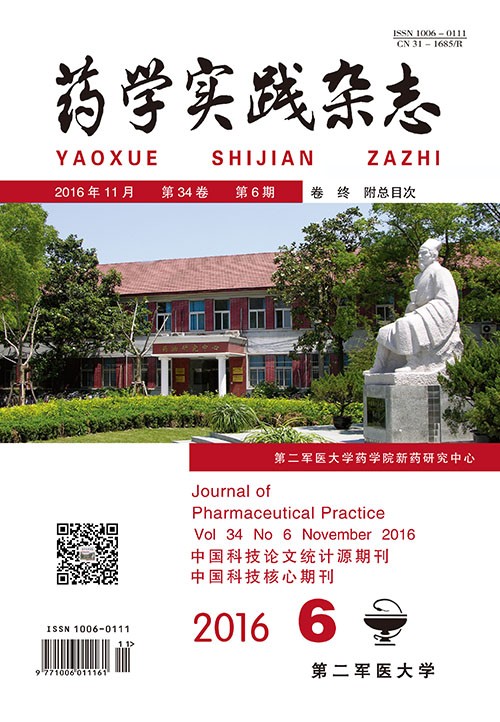|
[1]
|
Morschhauser J. Regulation of multidrug resistance in pathogenic fungi[J]. Fungal Genet Biol,2010,47(2):94-106. |
|
[2]
|
Ernst R, Kueppers P, Stindt J, et al. Multidrug efflux pumps:substrate selection in ATP-binding cassette multidrug efflux pumps——first come, first served?[J]FEBS J,2010,277(3):540-549. |
|
[3]
|
Cannon RD, Lamping E, Holmes AR, et al. Efflux-mediated antifungal drug resistance[J]. Clin Microbiol Rev,2009,22(2):291-321. |
|
[4]
|
Prasad R, Goffeau A. Yeast ATP-binding cassette transporters conferring multidrug resistance[J]. Annu Rev Microbiol,2012,66:39-63. |
|
[5]
|
Simonics T, Kozovska Z, Michalkova-Papajova D, et al. Isolation and molecular characterization of the carboxy-terminal pdr3 mutants in Saccharomyces cerevisiae[J]. Curr Genet,2000,38(5):248-255. |
|
[6]
|
Bosis E, Salomon D, Ohayon O,et al. Ssz1 restores endoplasmic reticulum-associated protein degradation in cells expressing defective cdc48-ufd1-npl4 complex by upregulating cdc48[J]. Genetics,2010,184(3):695-706. |
|
[7]
|
Ducett JK, Peterson FC, Hoover LA, et al. Unfolding of the C-terminal domain of the J-protein Zuo1 releases autoinhibition and activates Pdr1-dependent transcription[J]. J Mol Biol,2013,425(1):19-31. |
|
[8]
|
Prunuske AJ, Waltner JK, Kuhn P, et al. Role for the molecular chaperones Zuo1 and Ssz1 in quorum sensing via activation of the transcription factor Pdr1[J]. Proc Natl Acad Sci USA,2012,109(2):472-427. |
|
[9]
|
Kolaczkowska A, Manente M, Kolaczkowski M, et al. The regulatory inputs controlling pleiotropic drug resistance and hypoxic response in yeast converge at the promoter of the aminocholesterol resistance gene RTA1[J]. FEMS Yeast Res,2012,12(3):279-292. |
|
[10]
|
Teixeira MC, Dias PJ, Simoes T, et al. Yeast adaptation to mancozeb involves the up-regulation of FLR1 under the coordinate control of Yap1, Rpn4, Pdr3, and Yrr1[J]. Biochem Biophys Res Commun,2008,367(2):249-255.. |
|
[11]
|
Gulshan K, Schmidt JA, Shahi P, et al. Evidence for the bifunctional nature of mitochondrial phosphatidylserine decarboxylase:role in Pdr3-dependent retrograde regulation of PDR5 expression[J]. Mol Cell Biol,2008,28(19):5851-5864. |
|
[12]
|
Teixeira MC, Cabrito TR, Hanif ZM, et al. Yeast response and tolerance to polyamine toxicity involving the drug:H+ antiporter Qdr3 and the transcription factors Yap1 and Gcn4[J]. Microbiology,2011,157(Pt 4):945-956. |
|
[13]
|
Azie N, Neofytos D, Pfaller M, et al. The PATH (Prospective Antifungal Therapy) Alliance ® registry and invasive fungal infections:update 2012[J]. Diagn Microbiol Infect Dis,2012,73(4):293-300. |
|
[14]
|
Coste A, Turner V, Ischer F, et al. A mutation in Tac1p, a transcription factor regulating CDR1 and CDR2, is coupled with loss of heterozygosity at chromosome 5 to mediate antifungal resistance in Candida albicans[J]. Genetics,2006,172(4):2139-2156. |
|
[15]
|
Mandal A, Kumar A, Singh A, et al. A key structural domain of the Candida albicans Mdr1 protein[J]. Biochem J,2012,445(3):313-322. |
|
[16]
|
Shah AH, Singh A, Dhamgaye S, et al. Novel role of a family of major facilitator transporters in biofilm development and virulence of Candida albicans[J]. Biochem J,2014,460(2):223-235. |
|
[17]
|
Li R, Kumar R, Tati S, et al. Candida albicans flu1-mediated efflux of salivary histatin 5 reduces its cytosolic concentration and fungicidal activity[J]. Antimicrob Agents Chemother,2013,57(4):1832-1839. |
|
[18]
|
Pappas PG, Kauffman CA, Andes D, et al. Clinical practice guidelines for the management of candidiasis:2009 update by the Infectious Diseases Society of America[J]. Clin Infect Dis,2009,48(5):503-535. |
|
[19]
|
Torelli R, Posteraro B, Ferrari S, et al. The ATP-binding cassette transporter-encoding gene CgSNQ2 is contributing to the CgPDR1-dependent azole resistance of Candida glabrata[J]. Mol Microbiol,2008,68(1):186-201. |
|
[20]
|
Paul S, Schmidt JA, Moye-Rowley WS. Regulation of the CgPdr1 transcription factor from the pathogen Candida glabrata[J]. Eukaryot Cell,2011,10(2):187-197. |
|
[21]
|
Brun S, Dalle F, Saulnier P, et al. Biological consequences of petite mutations in Candida glabrata[J]. J Antimicrob Chemother,2005,56(2):307-314. |
|
[22]
|
Costa C, Pires C, Cabrito TR, et al. Candida glabrata drug:H+ antiporter CgQdr2 confers imidazole drug resistance, being activated by transcription factor CgPdr1[J]. Antimicrob Agents Chemother,2013,57(7):3159-3167. |
|
[23]
|
Costa C, Nunes J, Henriques A, et al. Candida glabrata drug:H+ antiporter CgTpo3(ORF CAGL0I10384g):role in azole drug resistance and polyamine homeostasis[J]. J Antimicrob Chemother,2014,69(7):1767-1776. |
|
[24]
|
Denning DW, Pleuvry A, Cole DC. Global burden of allergic bronchopulmonary aspergillosis with asthma and its complication chronic pulmonary aspergillosis in adults[J]. Med Mycol,2013,51(4):361-370. |
|
[25]
|
Pound MW, Townsend ML, Dimondi V, et al. Overview of treatment options for invasive fungal infections[J]. Med Mycol,2011,49(6):561-580. |
|
[26]
|
Snelders E, van der Lee HA, Kuijpers J, et al. Emergence of azole resistance in Aspergillus fumigatus and spread of a single resistance mechanism[J]. PLoS Med,2008,5(11):e219. |
|
[27]
|
Chowdhary A, Kathuria S, Xu J, et al. Clonal expansion and emergence of environmental multiple-triazole-resistant Aspergillus fumigatus strains carrying the TR(3)(4)/L98H mutations in the cyp51A gene in India[J]. PloS one,2012,7(12):e52871. |
|
[28]
|
Bueid A, Howard SJ, Moore CB, et al. Azole antifungal resistance in Aspergillus fumigatus:2008 and 2009[J]. J Antimicrob Chemother,2010,65(10):2116-2118. |
|
[29]
|
Escribano P, Pelaez T, Munoz P, et al. Is azole resistance in Aspergillus fumigatus a problem in Spain?[J] Antimicrob Agents Chemother,2013,57(6):2815-2820. |
|
[30]
|
Kovalchuk A, Driessen AJ. Phylogenetic analysis of fungal ABC transporters[J]. BMC genomics,2010,11:177. |
|
[31]
|
Rajendran R, Mowat E, McCulloch E, et al. Azole resistance of Aspergillus fumigatus biofilms is partly associated with efflux pump activity[J]. Antimicrob Agents Chemother,2011,55(5):2092-2097. |
|
[32]
|
Bowyer P,Mosquera J,Anderson M,et al.Identification of novel genes conferring altered azole susceptibility in Aspergillus fumigatus[J].FEMS Microbiol Lett,2012,332(1):10-19. |
|
[33]
|
Qiao J, Liu W, Li R. Truncated Afyap1 attenuates antifungal susceptibility of Aspergillus fumigatus to voriconazole and confers adaptation of the fungus to oxidative stress[J]. Mycopathologia,2010,170(3):155-160. |







 DownLoad:
DownLoad: